Related Research Articles

Fleischer Studios was an American animation studio founded in 1929 by brothers Max and Dave Fleischer, who ran the pioneering company from its inception until its acquisition by Paramount Pictures, the parent company and the distributor of its films. In its prime, Fleischer Studios was a premier producer of animated cartoons for theaters, with Walt Disney Productions being its chief competitor in the 1930s.
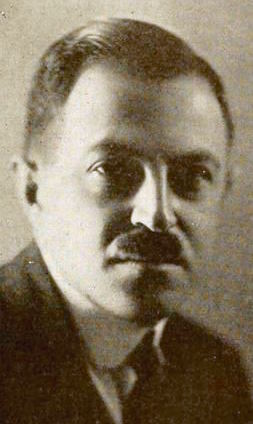
Max Fleischer was a Polish-American animator, inventor, film director and producer, and studio founder and owner. Born in Kraków, Poland, Fleischer immigrated to the United States where he became a pioneer in the development of the animated cartoon and served as the head of Fleischer Studios, which he co-founded with his younger brother Dave. He brought such comic characters as Koko the Clown, Betty Boop, Popeye, and Superman to the movie screen, and was responsible for several technological innovations, including the rotoscope, the "follow the bouncing ball" technique pioneered in the Ko-Ko Song Car-Tunes films, and the "stereoptical process". Film director Richard Fleischer was his son.

Talkartoons is a series of 42 animated cartoons produced by Fleischer Studios and distributed by Paramount Pictures between 1929 and 1932.

My Old Kentucky Home is a short animation film originally released in June 1926, by Max and Dave Fleischer of Fleischer Studios as one of the Song Car-Tunes series. The series, between May 1924 and September 1926, eventually totaled 36 films, of which 19 were made with sound. This cartoon features the original lyrics of "My Old Kentucky Home" (1853) by Stephen Foster, and was recorded in the Lee de Forest Phonofilm sound-on-film system.

Koko the Clown is an animated cartoon character created by Max Fleischer. He first appeared as the main protagonist in Out of the Inkwell (1918–1929), a major animated series of the silent era. Throughout the series, he goes on many adventures with his canine companion "Fitz the Dog", who would later evolve into Bimbo in the Betty Boop cartoons.
Animated films in the United States date back to at least 1906 when Vitagraph released Humorous Phases of Funny Faces. Although early animations were rudimentary, they rapidly became more sophisticated with such classics as Gertie the Dinosaur in 1914, Felix the Cat, Oswald the Lucky Rabbit, and Koko the Clown.
Mother, Mother, Mother Pin a Rose on Me is a film, produced by Out of the Inkwell Studios in the Phonofilm sound-on-film system, and released on March 1, 1925, as part of the Song Car-Tunes series.

Out of the Inkwell is an American animated film series of the silent era. It was produced by Max Fleischer from 1918 to 1929 and was called The Inkwell Imps at the end of that period.

"(You're the Flower of My Heart,) Sweet Adeline" is a ballad best known as a barbershop standard. It was first published in 1903, with lyrics by Richard Husch Gerard to music by Harry Armstrong, from a tune he had written in 1896 at the age of 18. According to a 1928 newspaper story, the lyrics were inspired "by a girl who worked at the music counter of a New York department store." After failing to find a publisher with the initial title, "You're the Flower of My Heart, Sweet Rosalie", according to a story the two decided a new title was in order and were inspired by a poster advertising the farewell tour of opera singer Adelina Patti. It did not become a hit until it was performed in 1904 by the group The Haydn Quartet. The Haydn Quartet's version was #1 for 10 weeks in 1904, and the Peerless Quartet also hit #1 with their version in 1904, for three weeks, according to Joel Whitburn's Pop Memories.
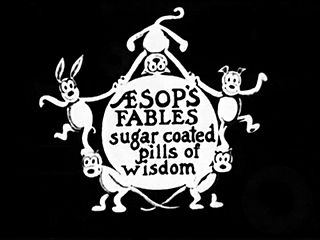
Aesop's Fables is a series of animated short subjects, created by American cartoonist Paul Terry. Produced from 1921 to 1933, the series includes The Window Washers (1925), Scrambled Eggs (1926), Small Town Sheriff (1927), Dinner Time (1928), and Gypped in Egypt (1930). Dinner Time is the first cartoon with a synchronized soundtrack ever released to the public. The series provided inspiration to Walt Disney to found the Laugh-O-Gram Studio in Kansas City, Missouri, where he created Mickey Mouse.
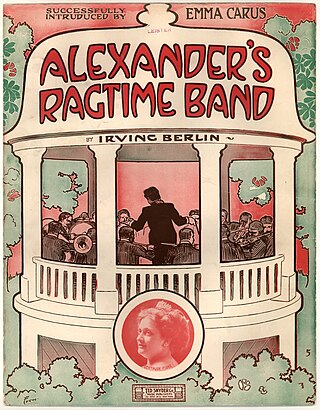
Screen Songs are a series of animated cartoons produced at the Fleischer Studios and distributed by Paramount Pictures between 1929 and 1938. Paramount brought back the sing-along cartoons in 1945, now in color, and released them regularly through 1951. Two of Paramount's one-shot cartoons quietly revived the format later: Candy Cabaret (1954) and Hobo's Holiday (1963).
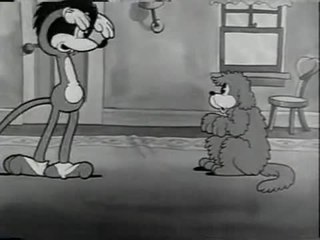
The bouncing ball is a virtual device used in motion picture films and video recordings to visually indicate the rhythm of a song, helping audiences to sing along with live or prerecorded music. As the song's lyrics are displayed on the screen in a lower third of projected or character-generated text, an animated ball bounces across the top of the words, landing on each syllable when it is to be sung.
Phonofilm is an optical sound-on-film system developed by inventors Lee de Forest and Theodore Case in the early 1920s.

"By The Light of the Silvery Moon" or "By the Light of the Silv'ry Moon" is a popular love song. The music was written by Gus Edwards, and the lyrics by Edward Madden. The song was published in 1909 and first performed on stage by Lillian Lorraine in the Ziegfeld Follies of 1909. It was one of a series of moon-related Tin Pan Alley songs of the era. The song was also used in the short-lived Broadway show Miss Innocence when it was sung by Frances Farr.
Seymour Kneitel was an American animator, best known for his work with Fleischer Studios and its successor, Famous Studios.
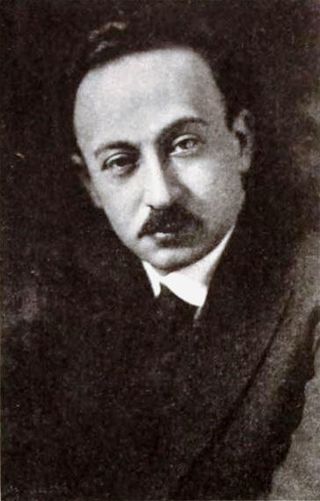
Hugo Riesenfeld was an Austrian-American composer. As a film director, he began to write his own orchestral compositions for silent films in 1917, and co-created modern production techniques where film scoring serves an integral part of the action. Riesenfeld composed about 100 film scores in his career.
The Sidewalks of New York are two cartoon short films made by animation pioneers Max Fleischer and Dave Fleischer, both films using the 1894 song "The Sidewalks of New York".
Finding His Voice (1929) is a short film, created as an instructional film on how the Western Electric sound-on-film recording system worked. Recording stars Billy Murray and Walter Scanlan, uncredited, provide the speaking and singing voices. Murray also provided the voice for the Fleischer Studios character Bimbo.
Oh Mabel is a 1924 American animated short film, part of the Song Car-Tunes film series. This film is the first sound film of the series, and used the Phonofilm sound-on-film system. The Song Car-Tunes series, before it ended in September 1926, eventually totaled 36 films, of which 19 were made with sound.

Chinatown, My Chinatown is a 1929 animated short film which was presented by Max Fleischer and directed by Dave Fleischer. The film, which was originally released by Paramount, features a sing-along version of the song "Chinatown, My Chinatown", a song that was originally published in 1910.
References
- ↑ Pointer, Ray (2016) "The Art and Inventions of Max Fleischer: American Animation Pioneer", McFarland & Co. Publishers
- ↑ Pointer, Ray (2016) "The Art and Inventions of Max Fleischer: American Animation Pioneer", McFarland & Co. Publishers
- ↑ Pointer, Ray (2016) "The Art and Inventions of Max Fleischer: American Animation Pioneer", McFarland & Co. Publishers
- ↑ Goodbye My Lady Love (1924)
- ↑ Oh Mabel at SilentEra
- ↑ SilentEra entry
- ↑ SilentEra says this is one of 17 Song Car-Tunes designed for live musical accompaniment in theaters
- ↑ SilentEra entry
- ↑ SilentEra entry
- ↑ The Sidewalks of New York (1925) at IMDB
- ↑ 1925 film at SilentEra
- ↑ SilentEra entry; one of 17 silent produced for live musical accompaniment
- ↑ SilentEra entry
- ↑ SilentEra entry; one of the last of the Song Car-Tunes releasesd in Phonofilm
- ↑ SilentEra entry
- ↑ SilentEra entry
- ↑ 1926 animated version at IMDB
- ↑ 1926 animated version at SilentEra
- ↑ IMDB entry
- ↑ SilentEra entry
- ↑ SilentEra entry
- ↑ SilentEra entry
- ↑ SilentEra entry
- ↑ SilentEra entry
- ↑ SilentEra entry
- ↑ SilentEra entry
- ↑ SilentEra entry
- ↑ IMDB entry
- ↑ SilentEra entry
- ↑ SilentEra entry says originally released silent, may have been reissued 1928 by Weiss Brothers-Artclass Pictures
- ↑ SilentEra entry
- ↑ SilentEra entry
- ↑ SilentEra entry